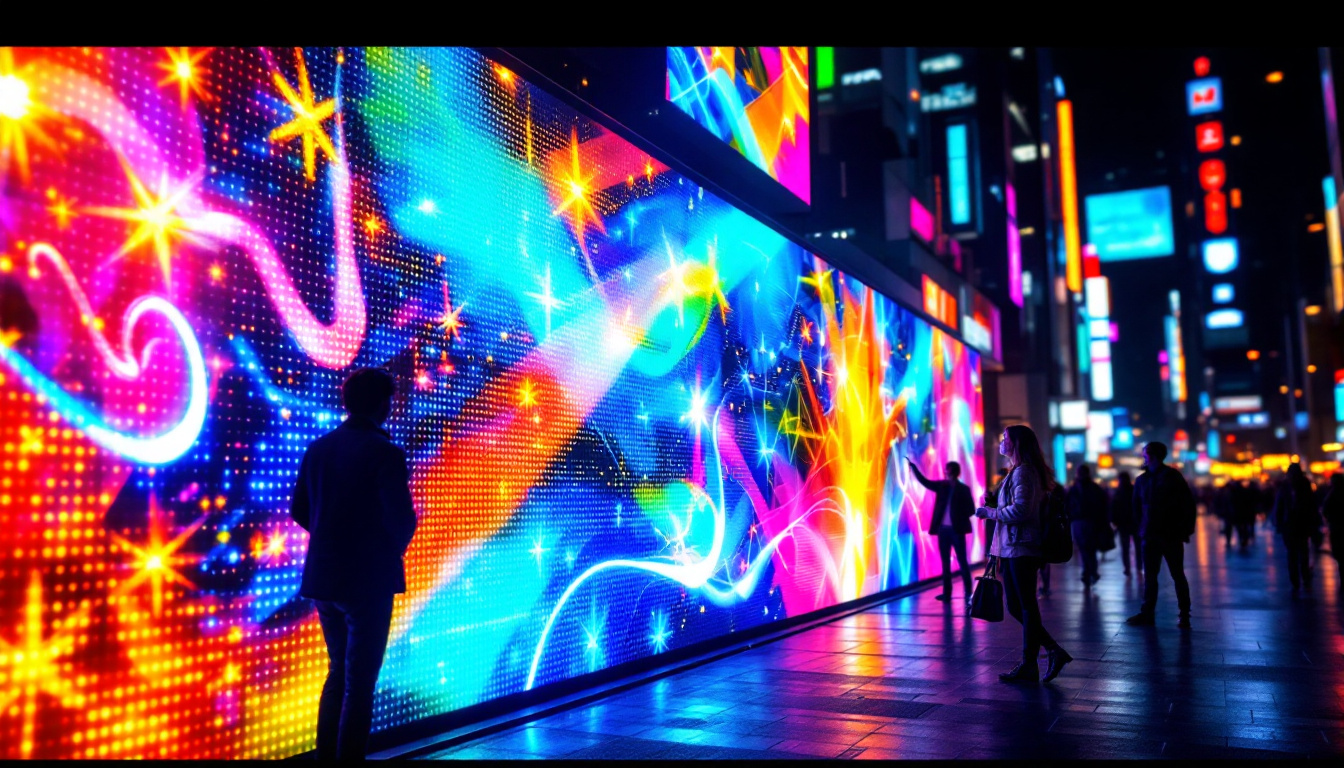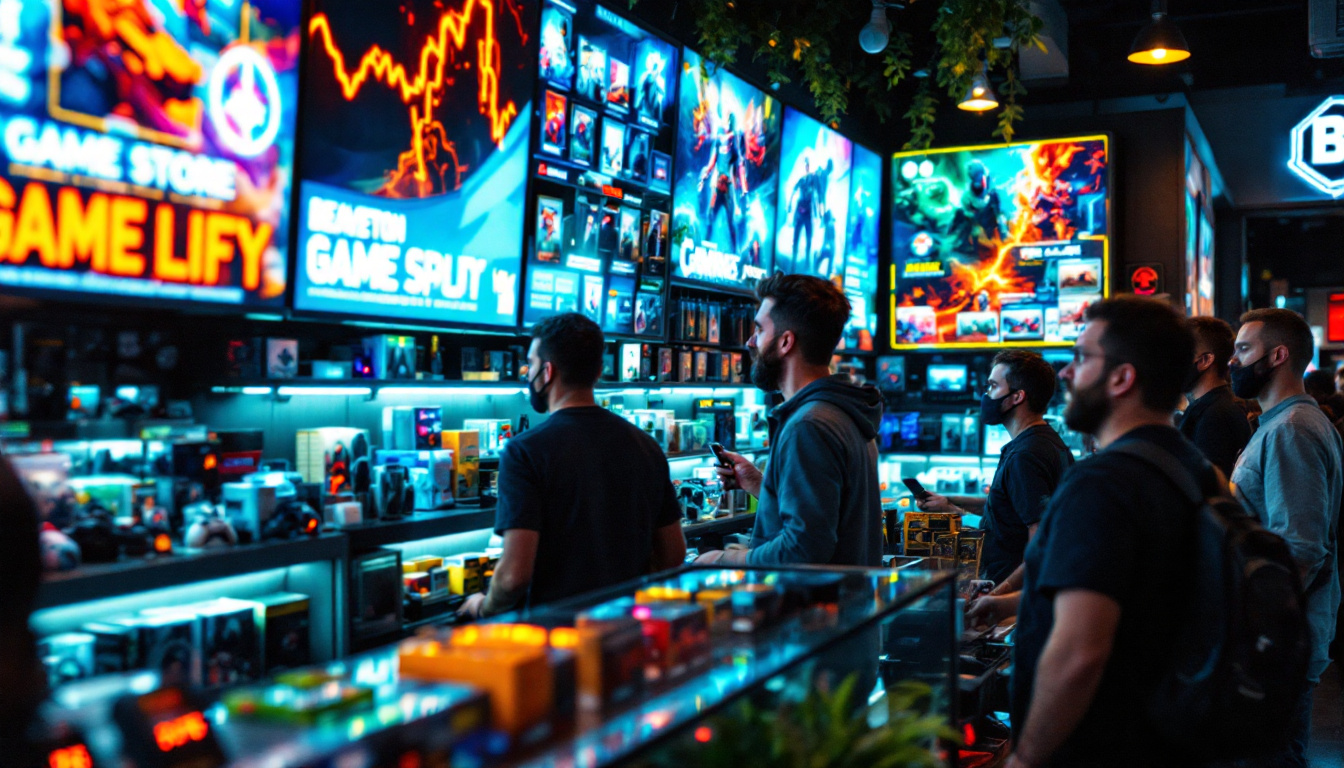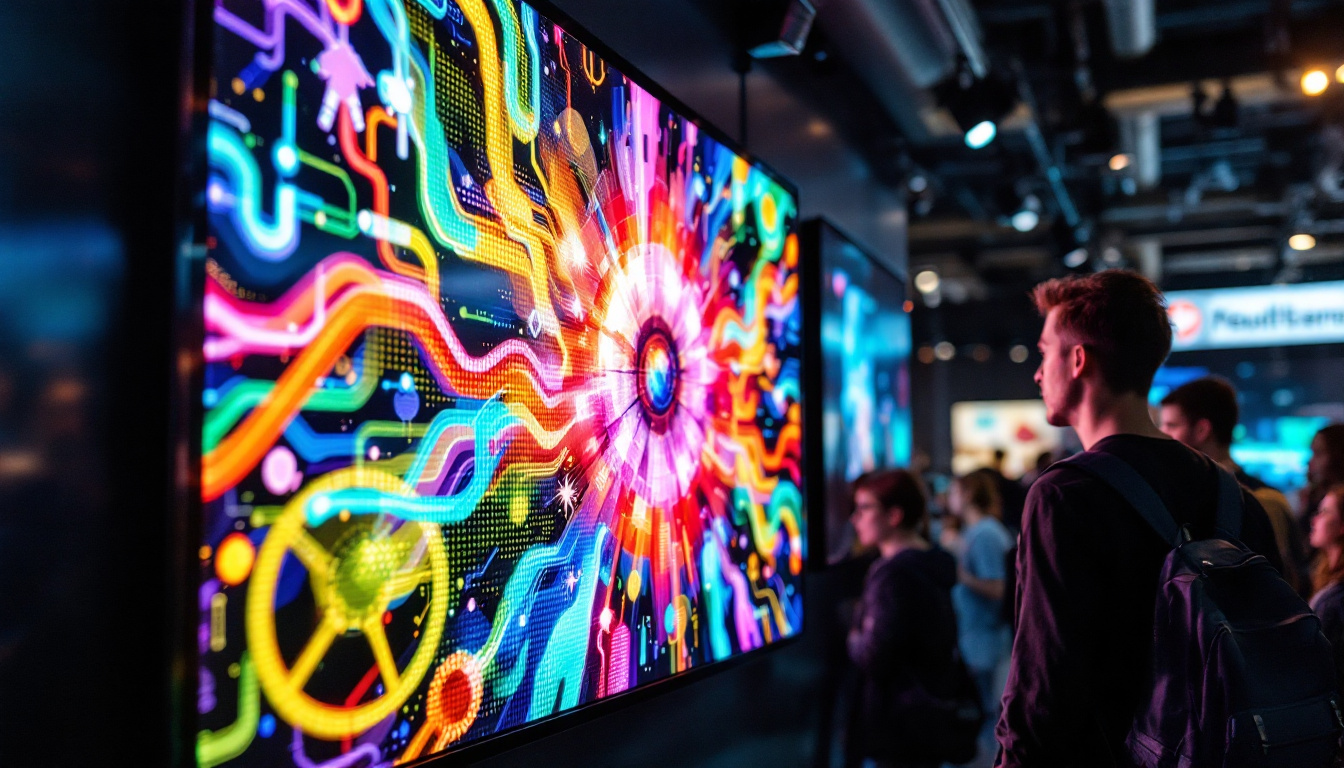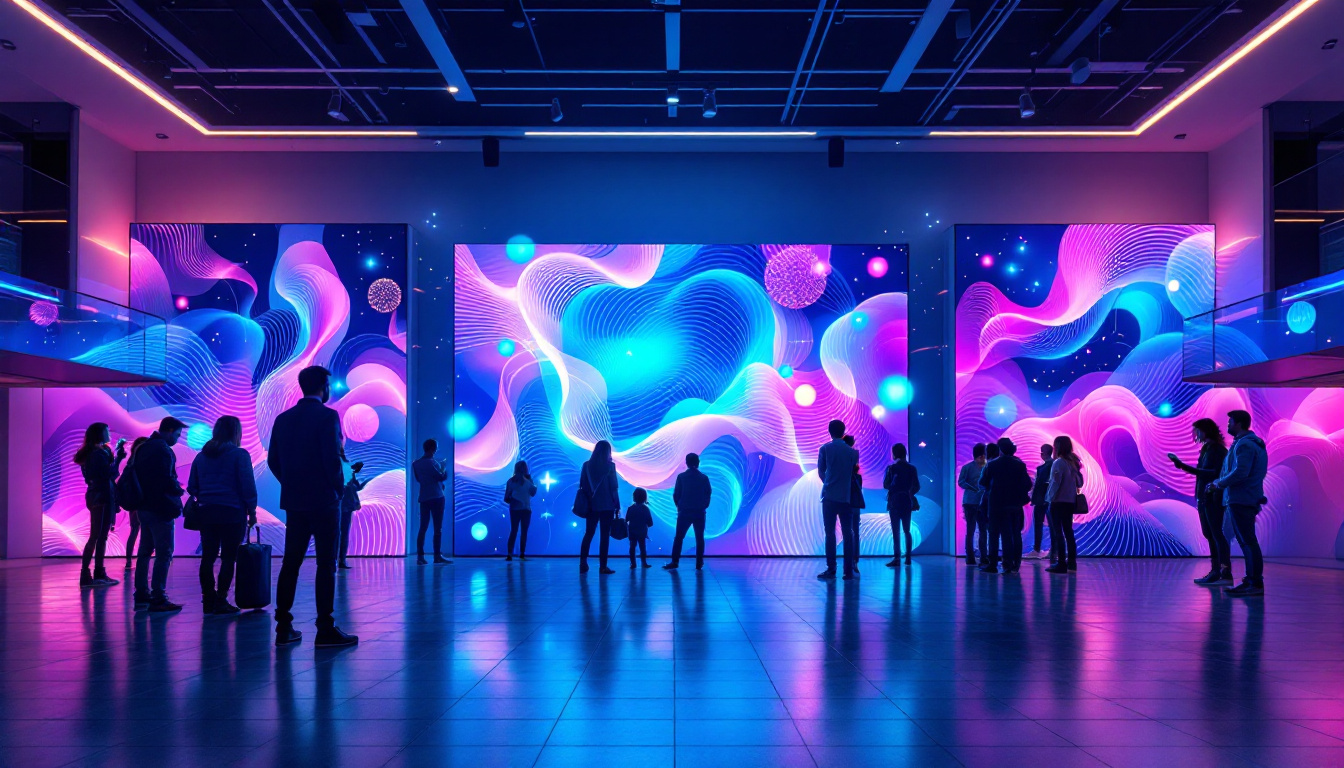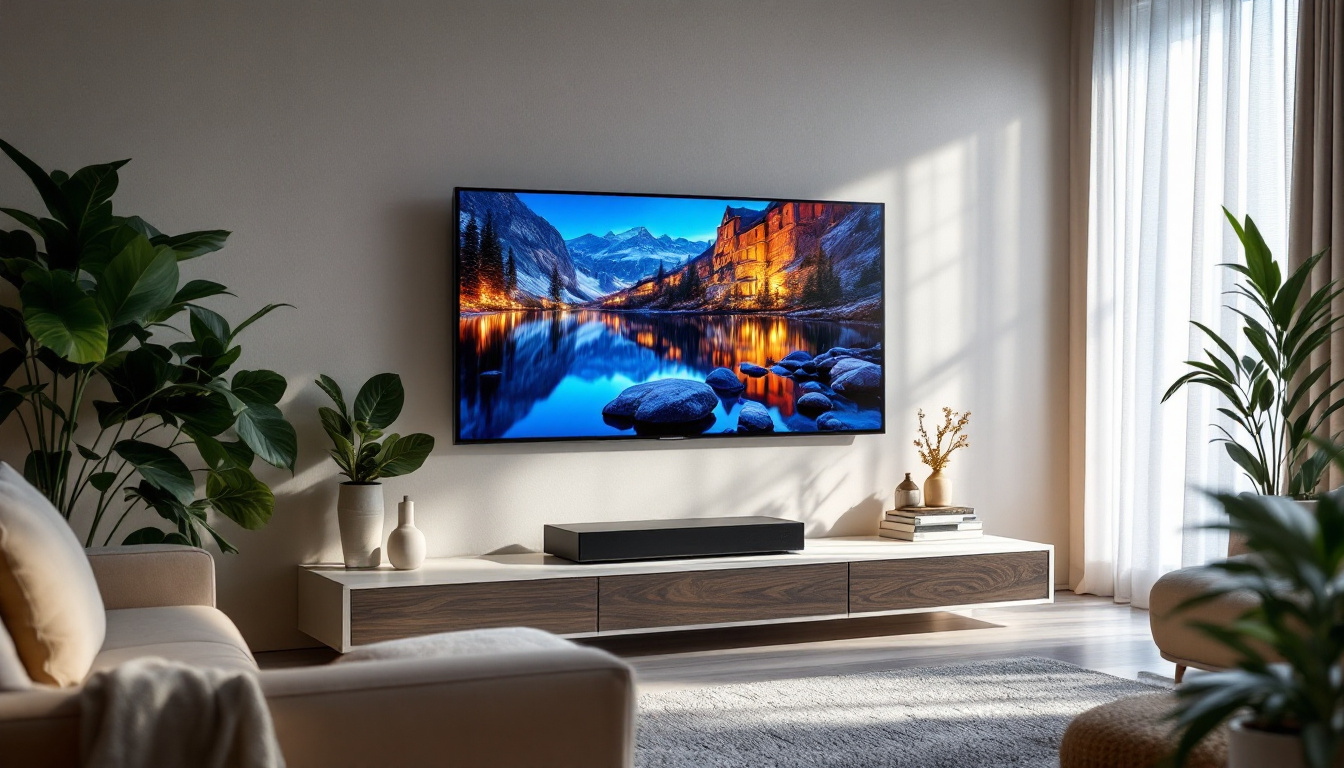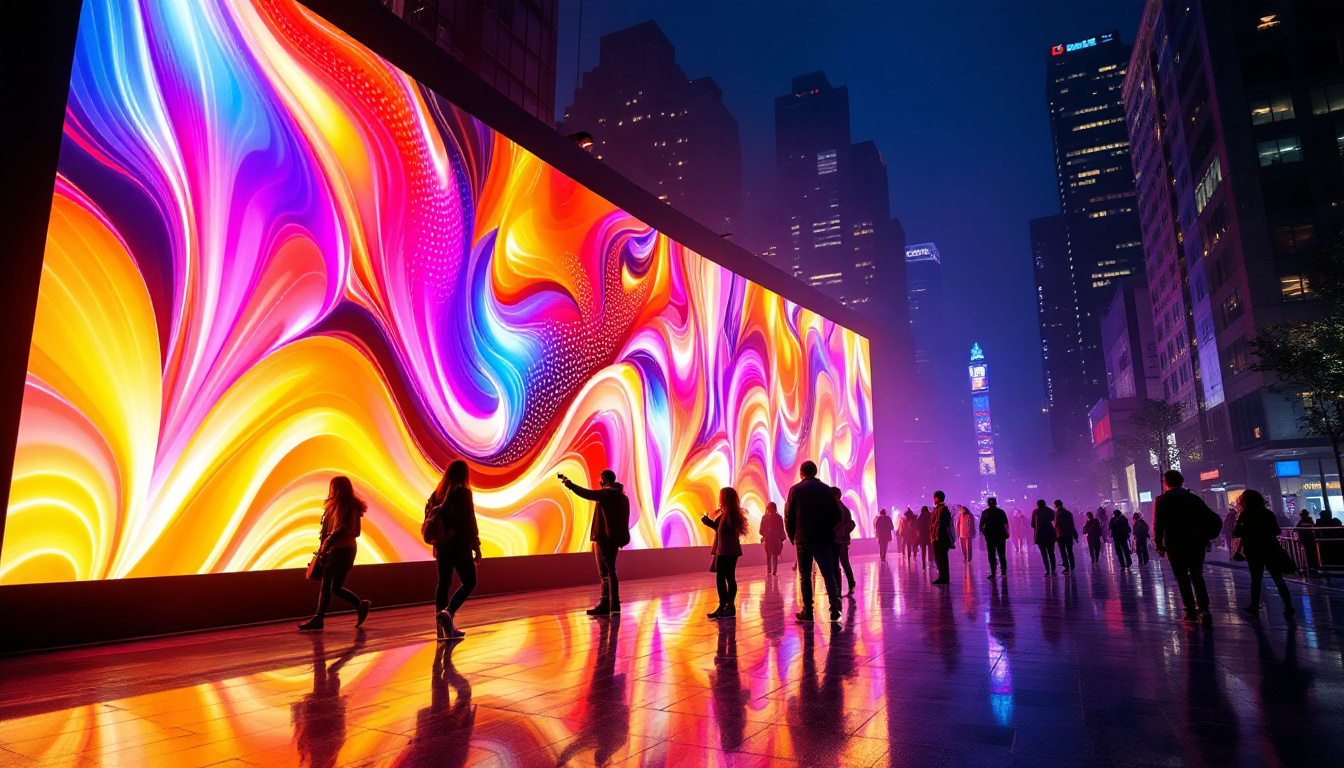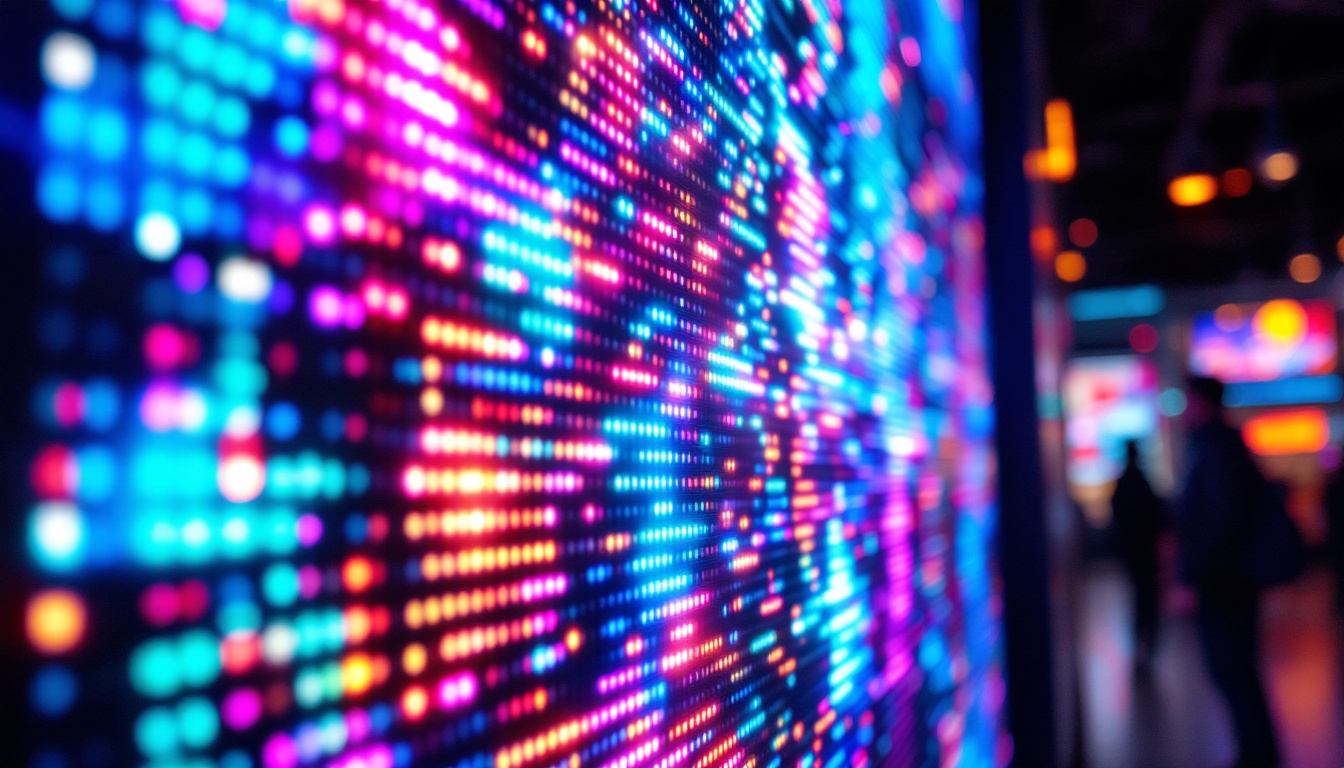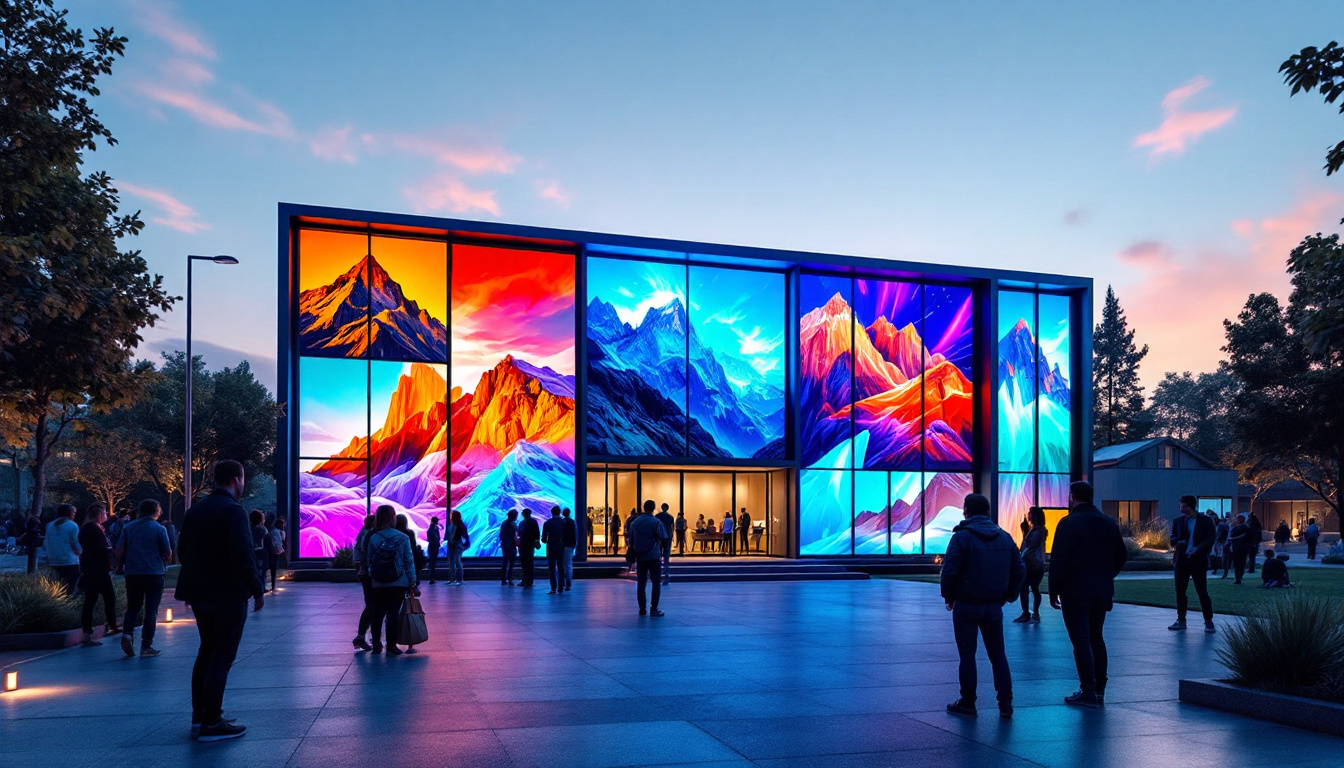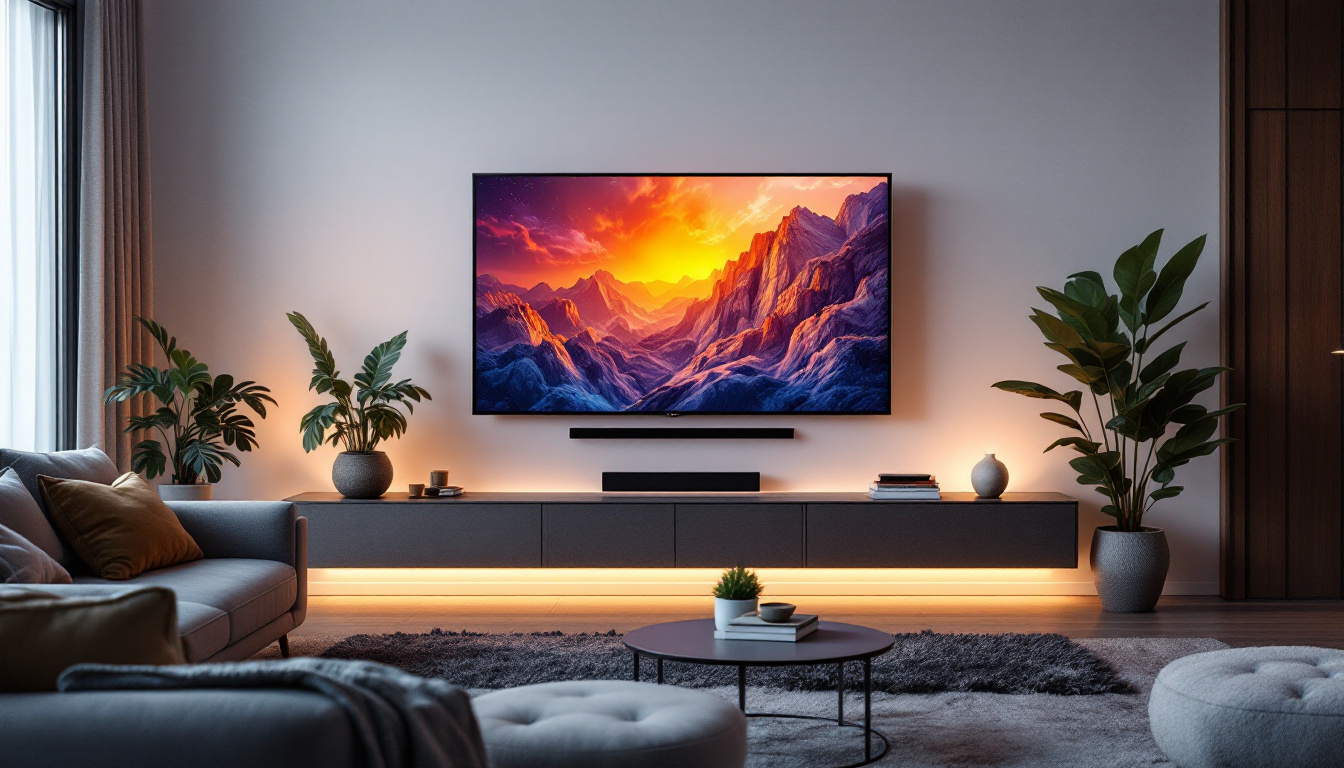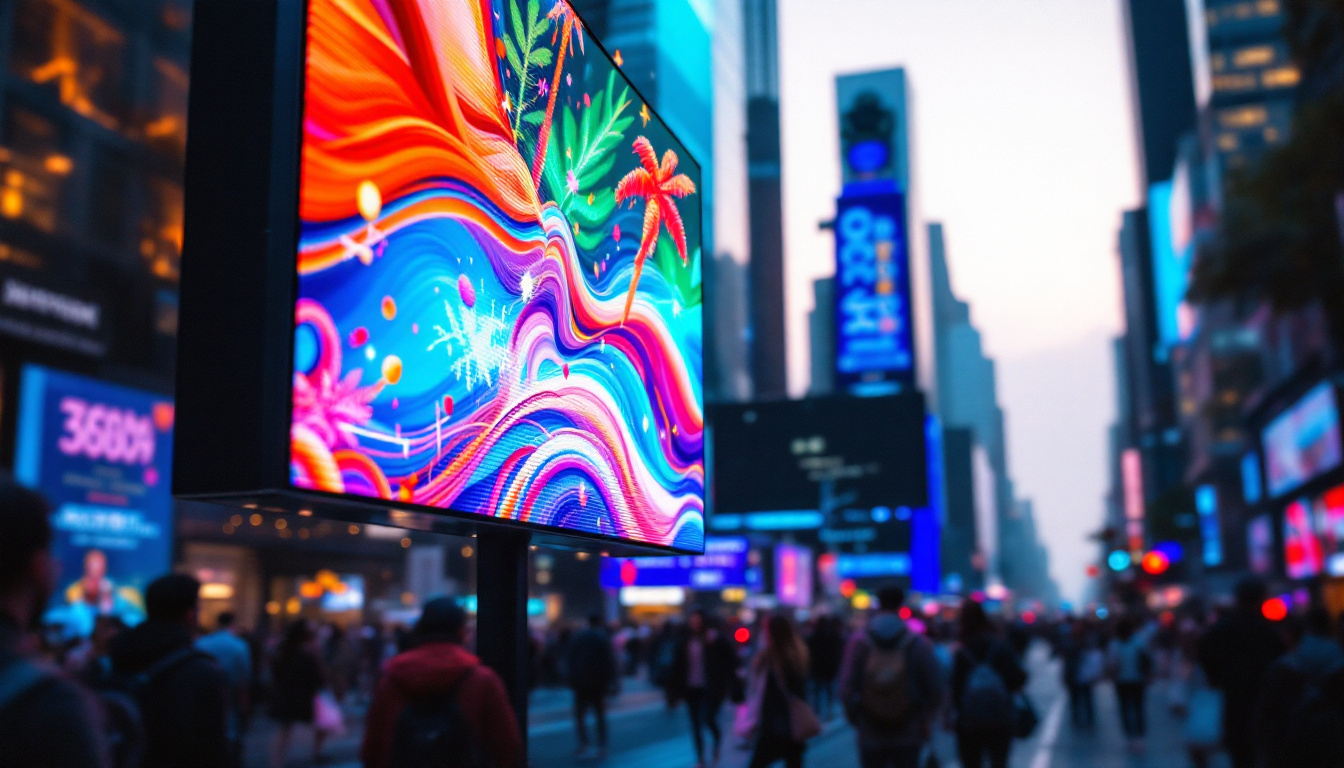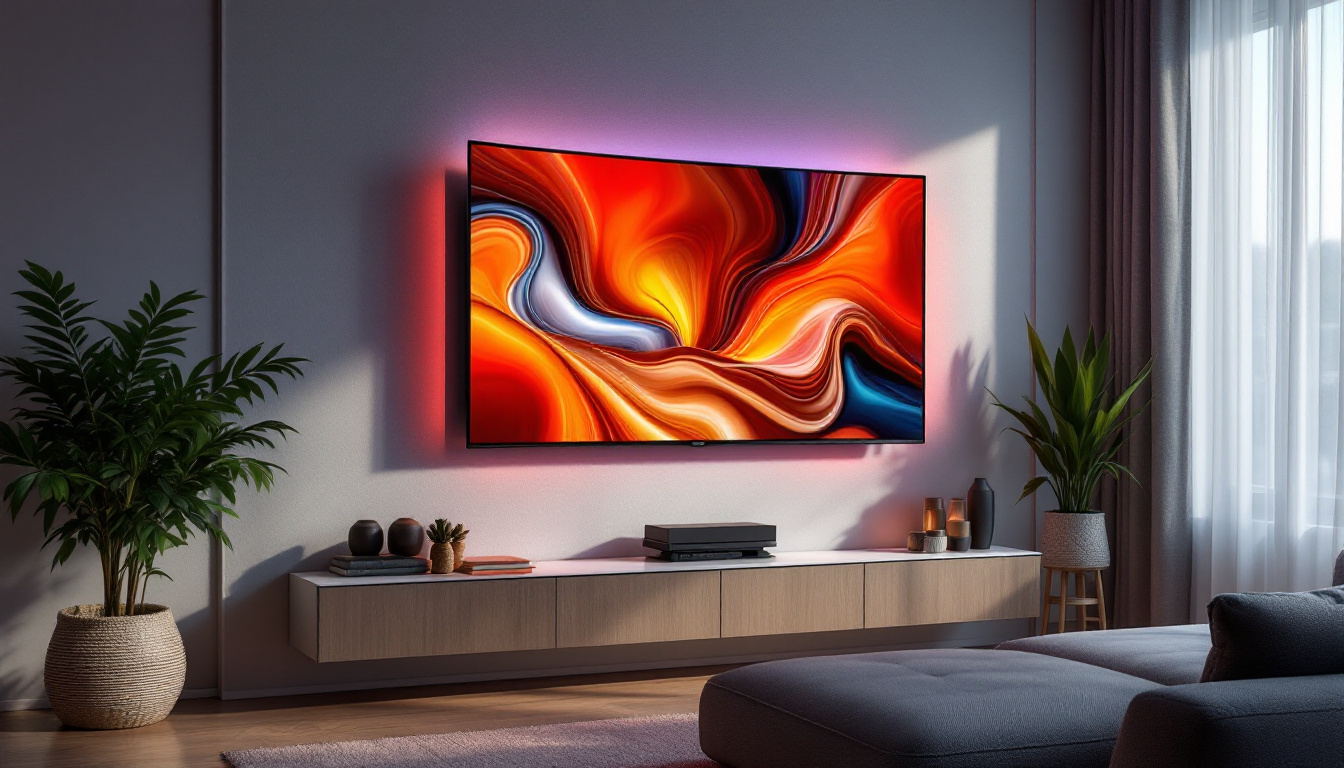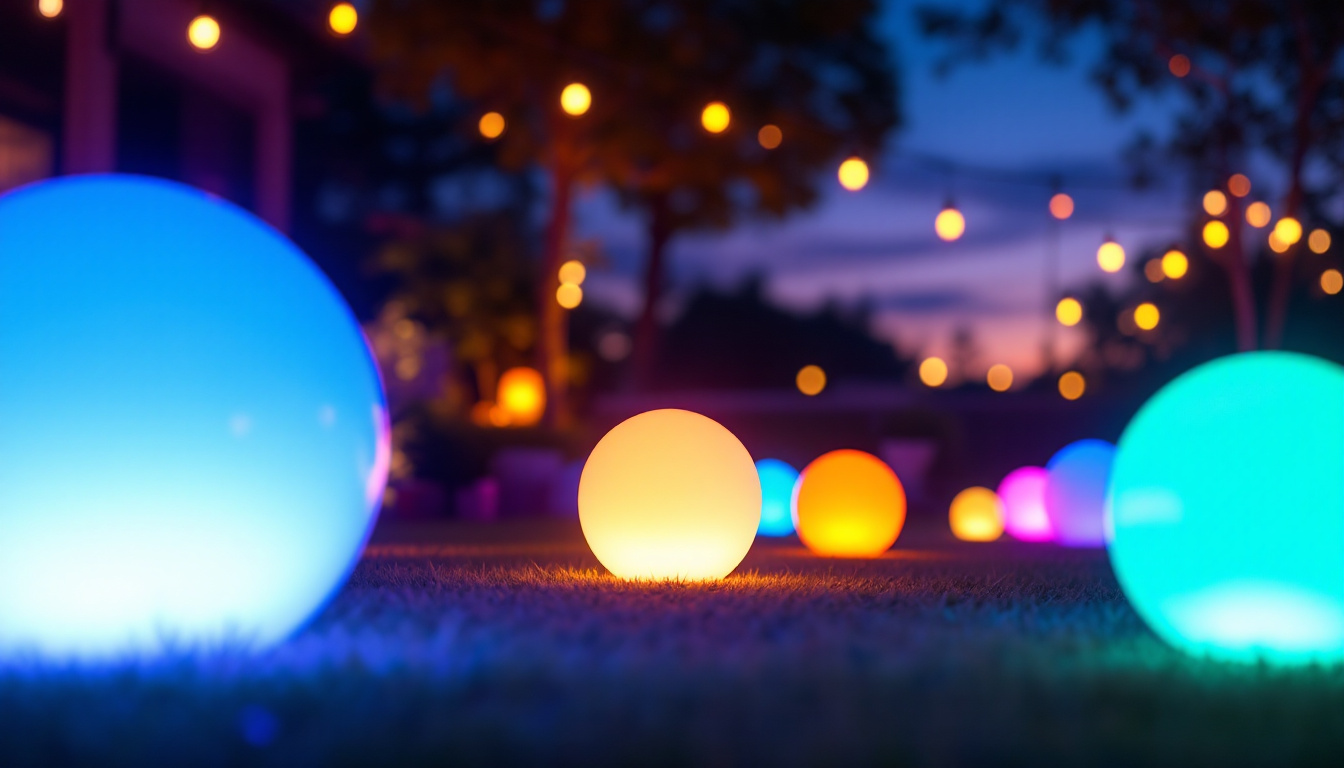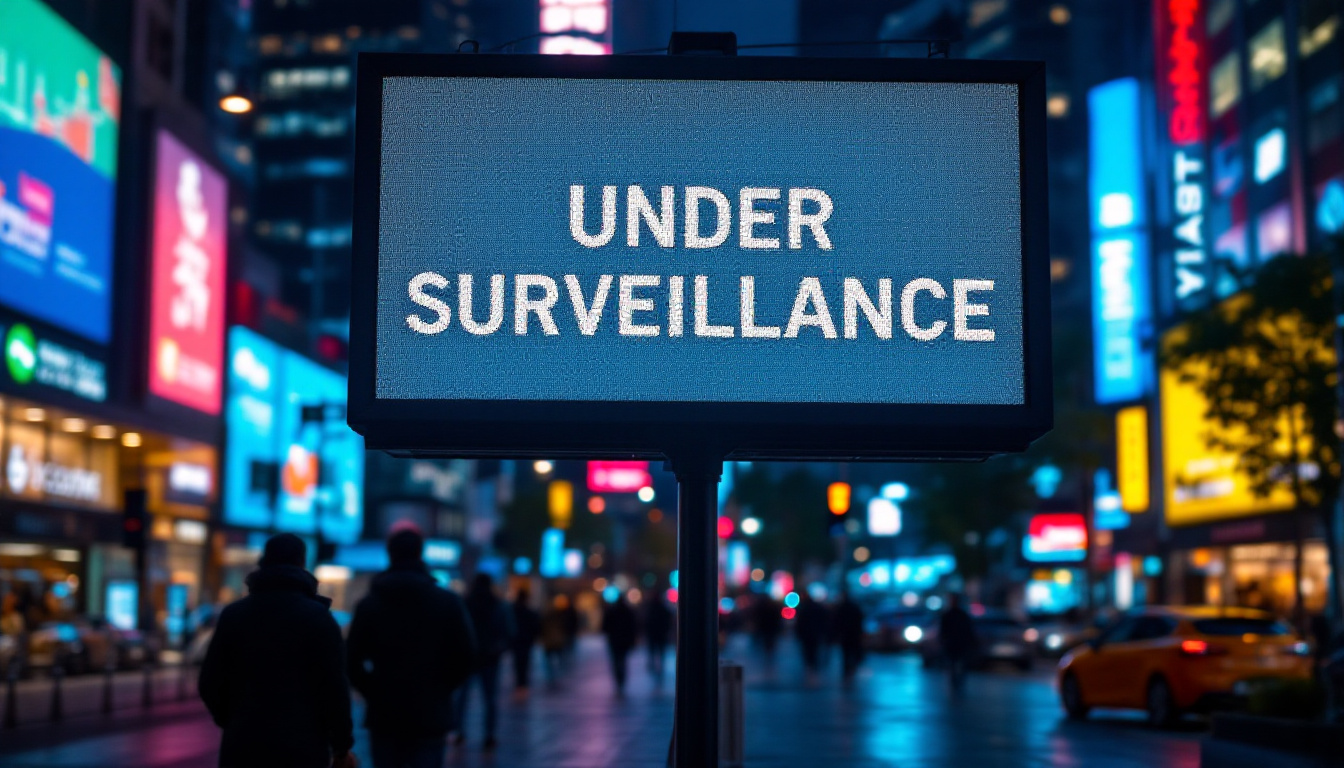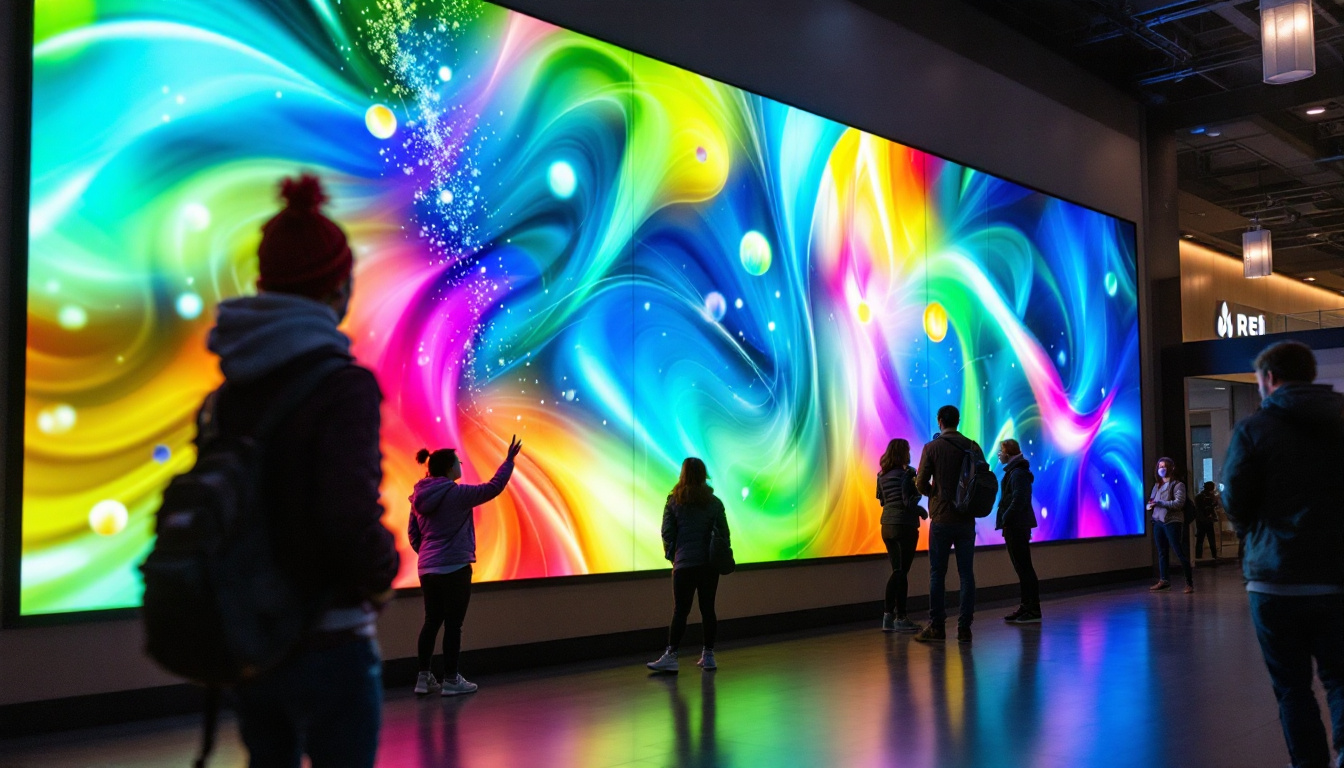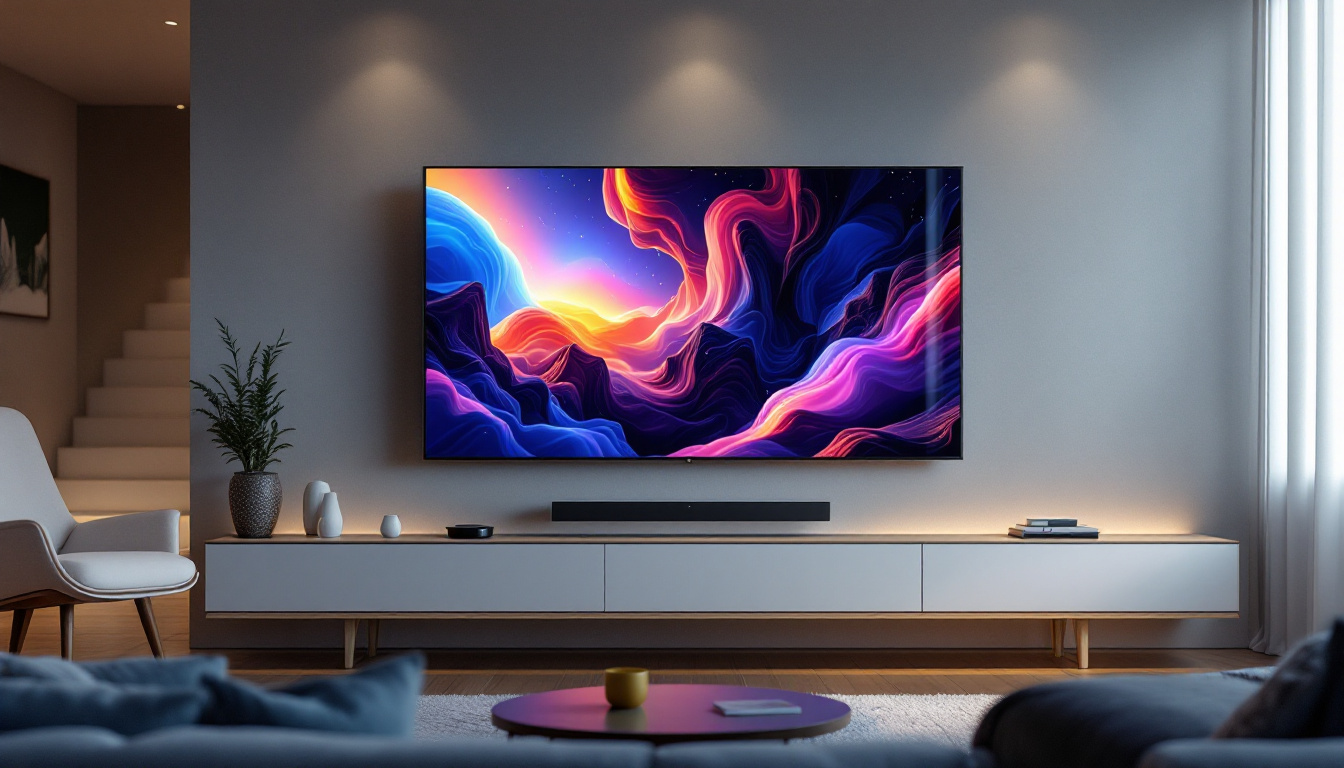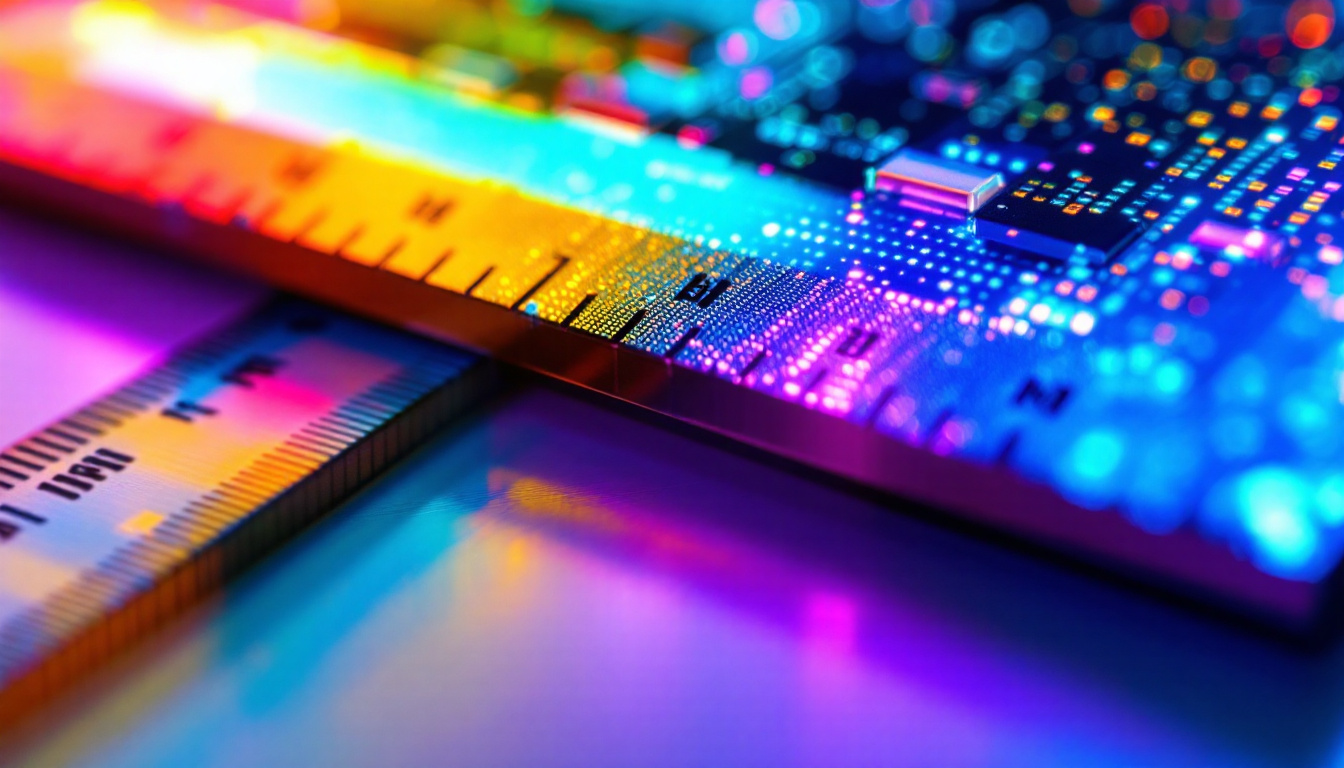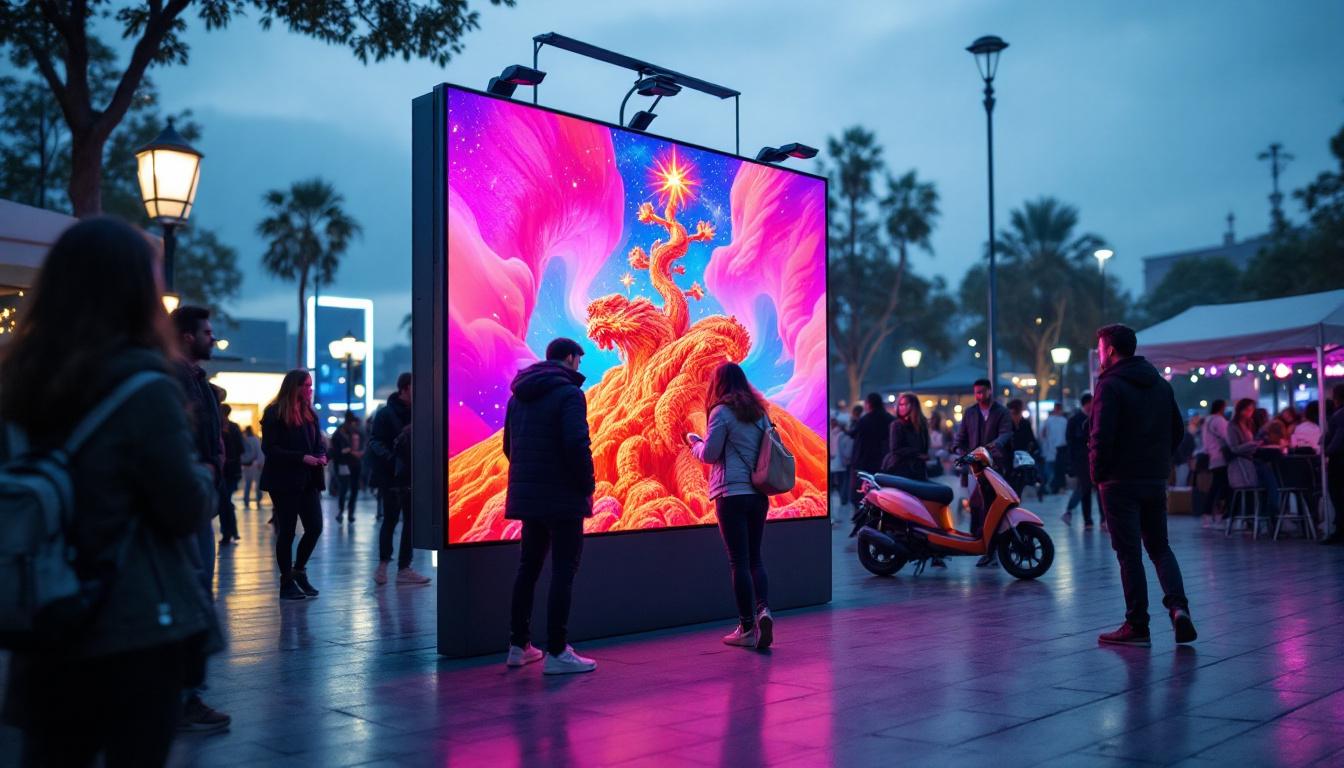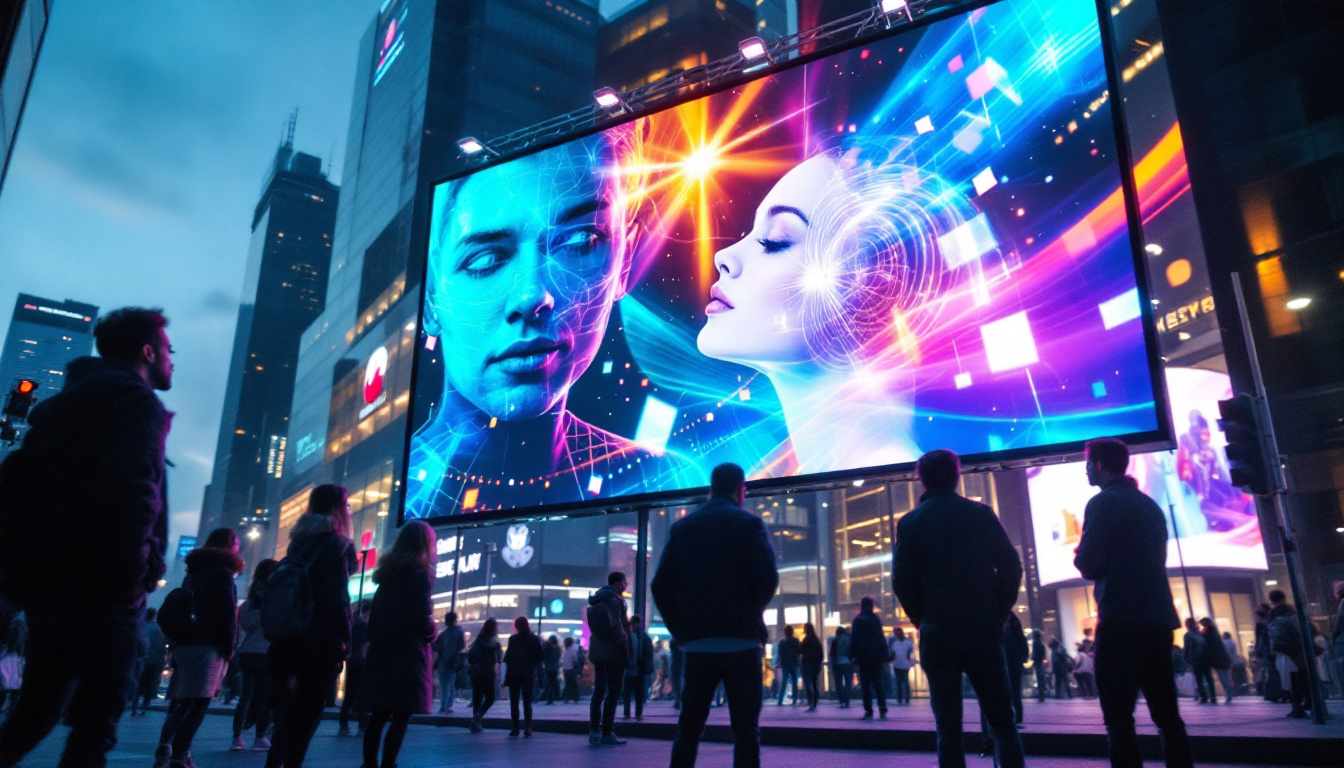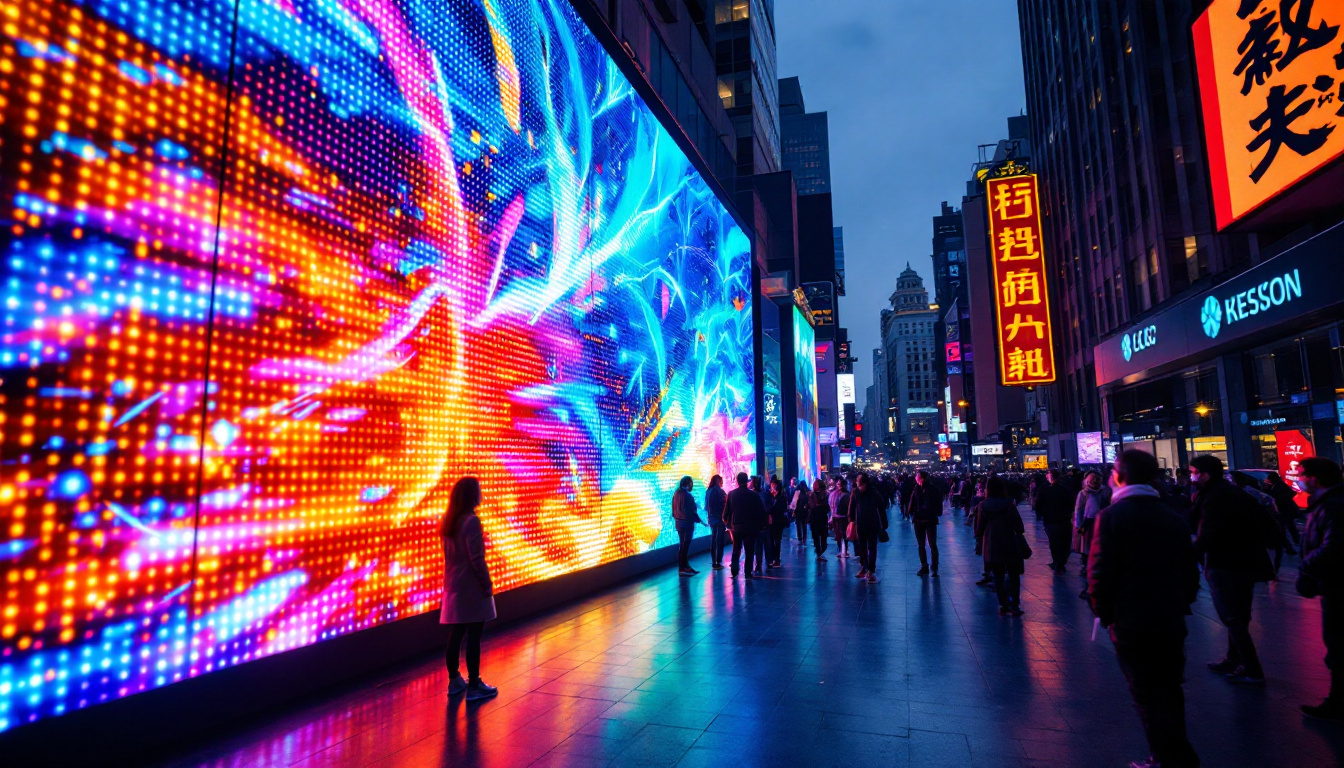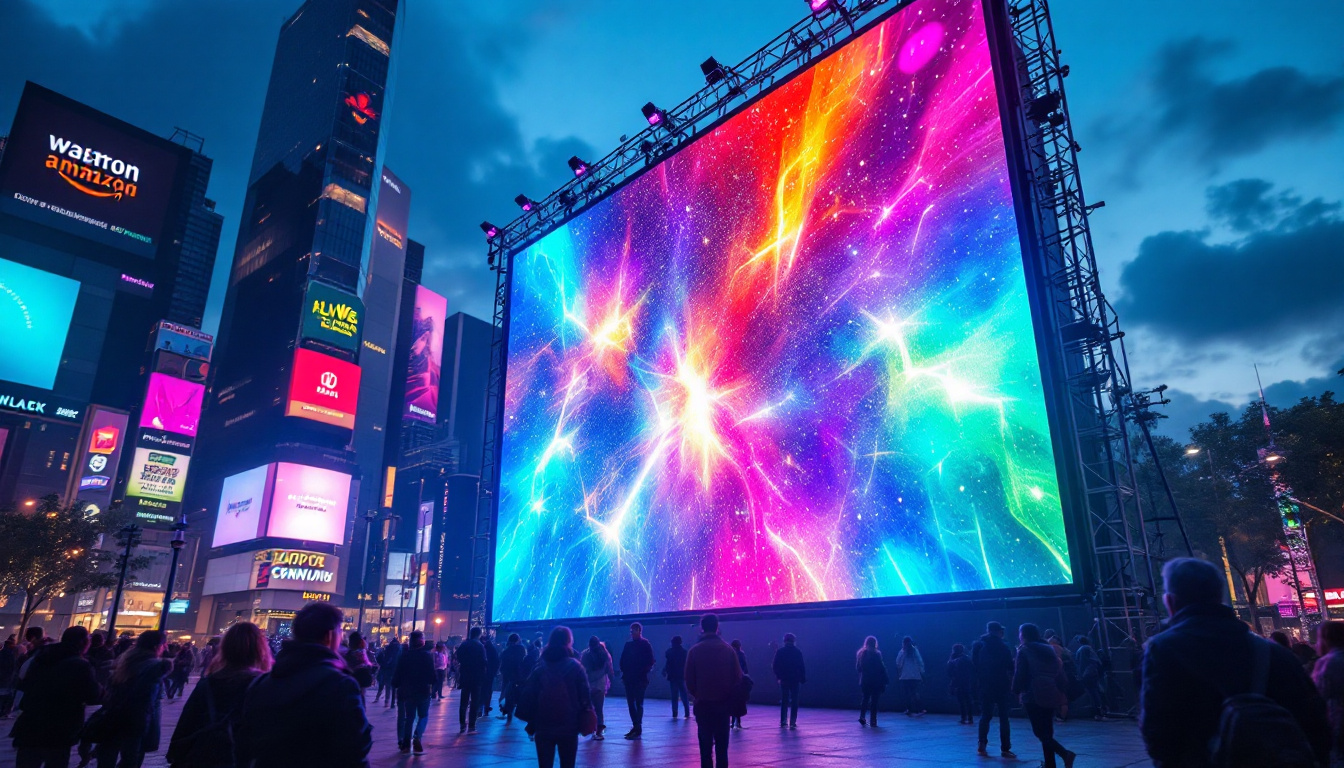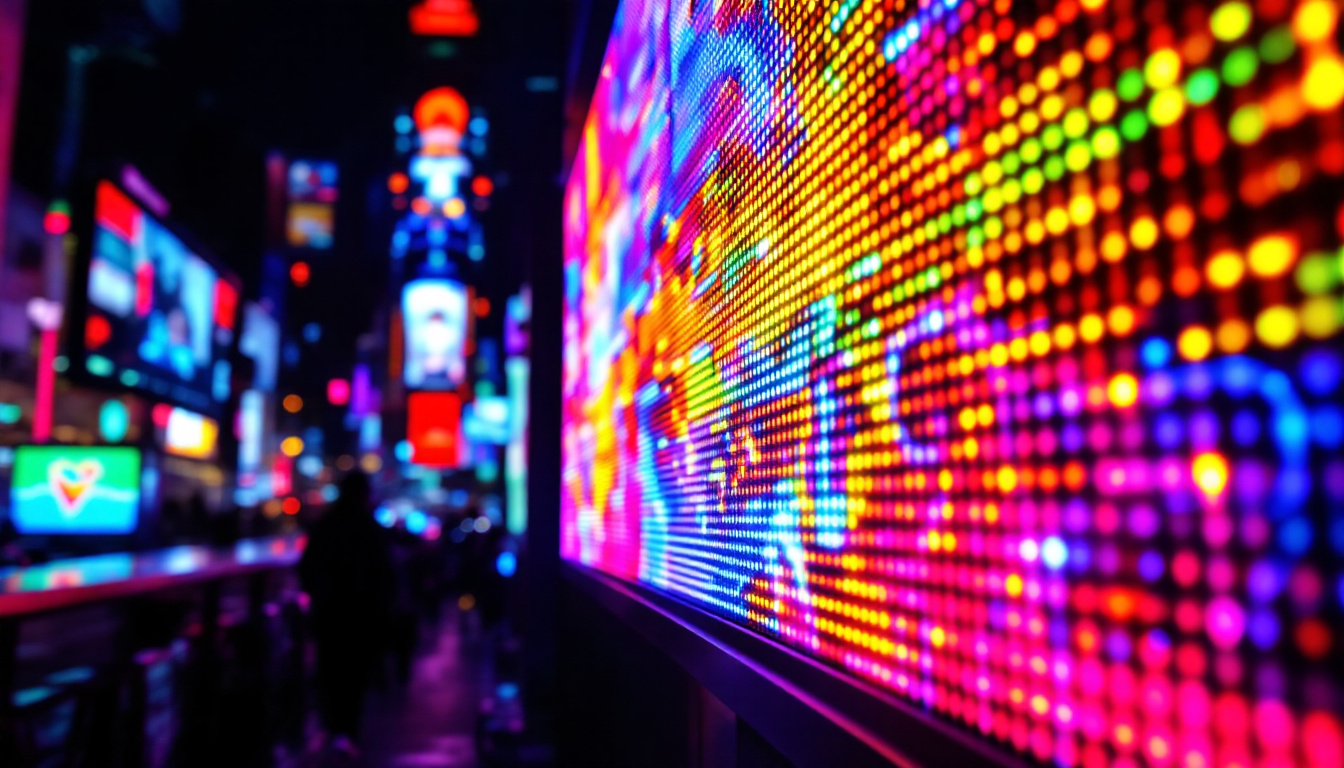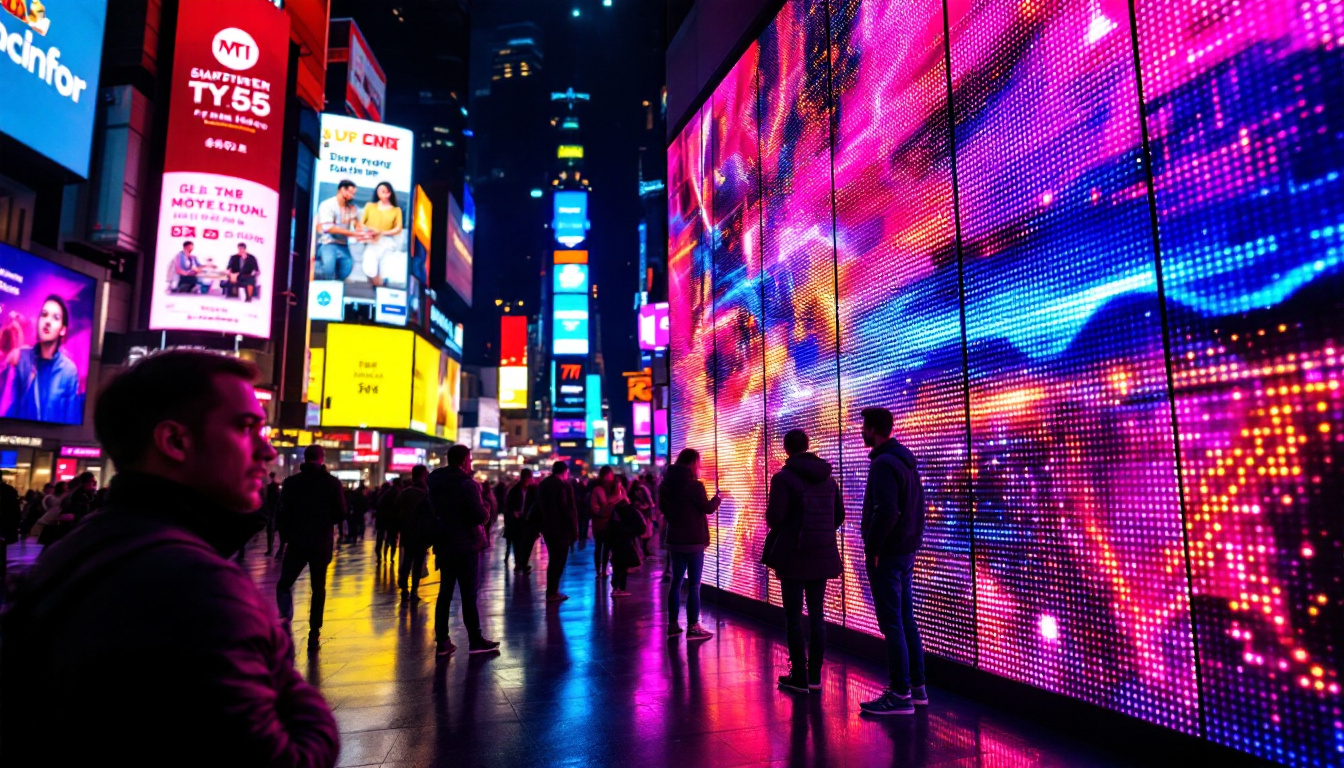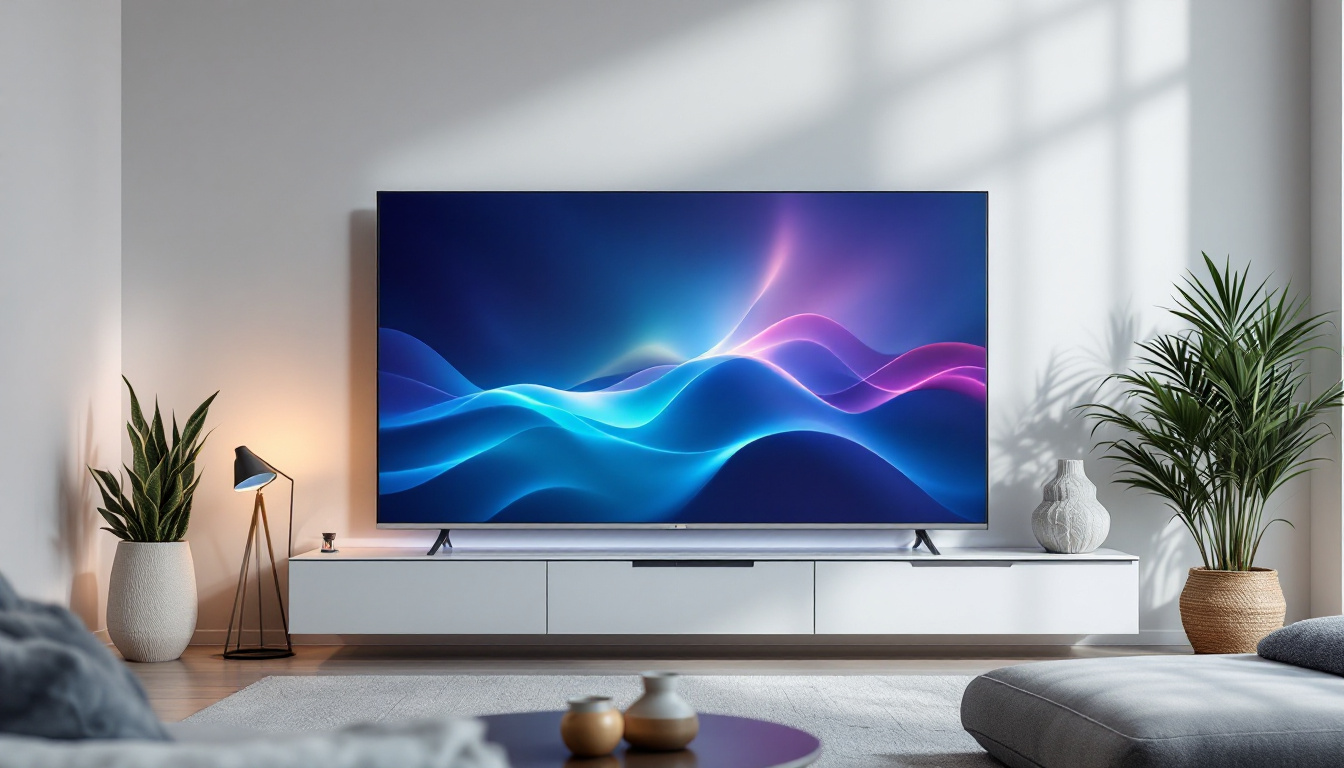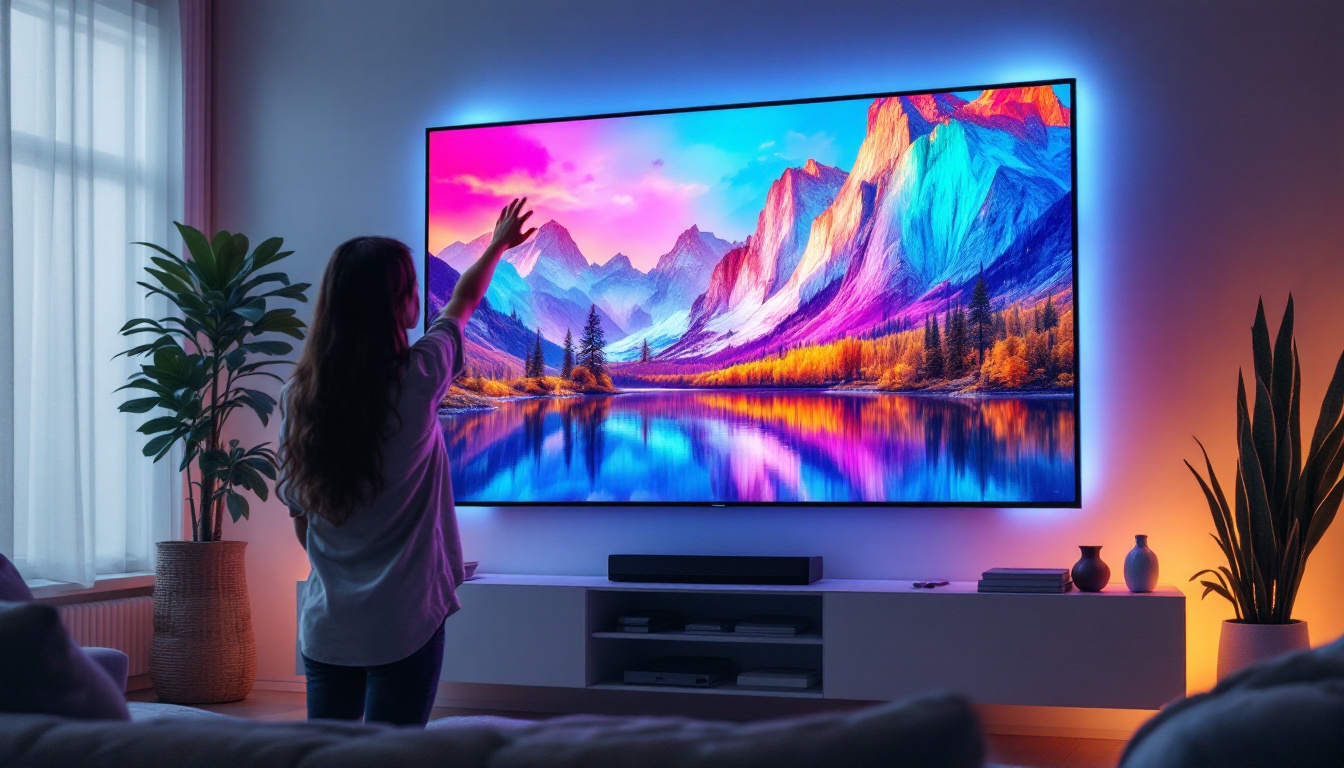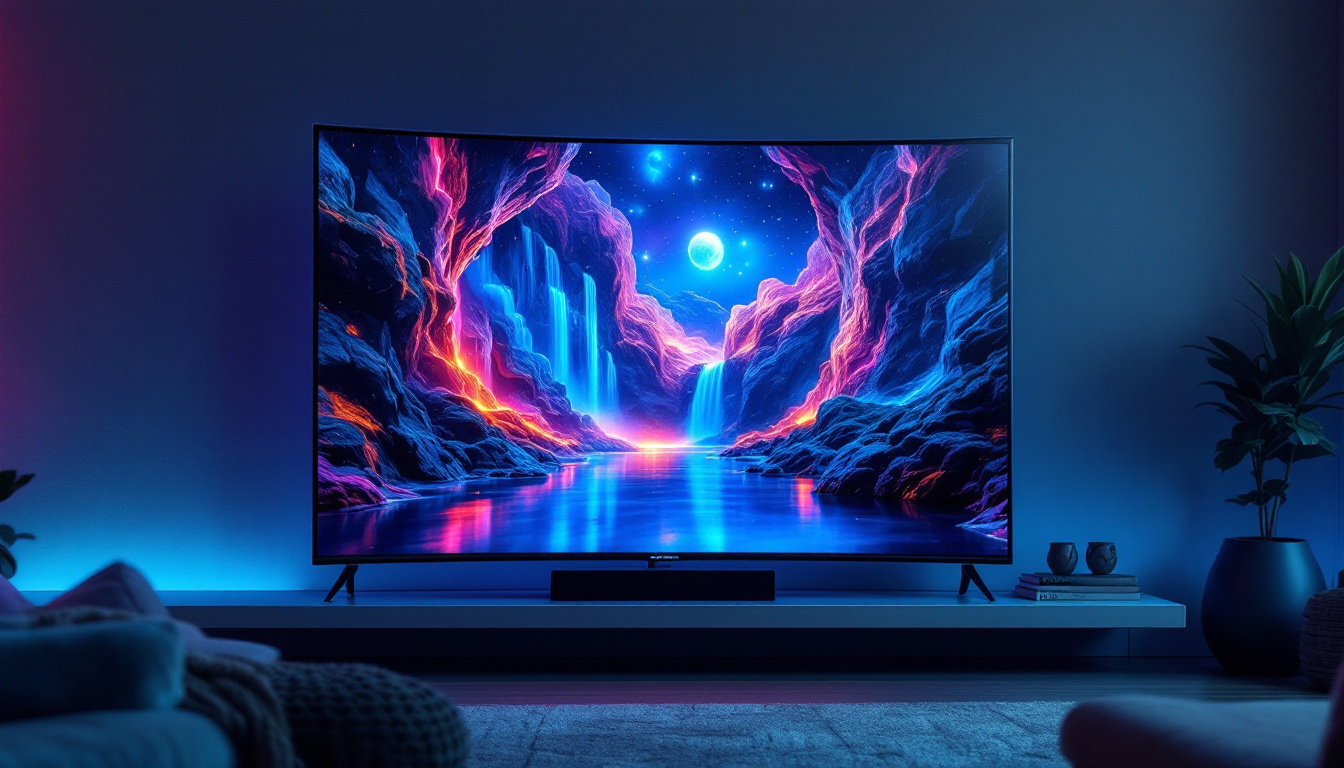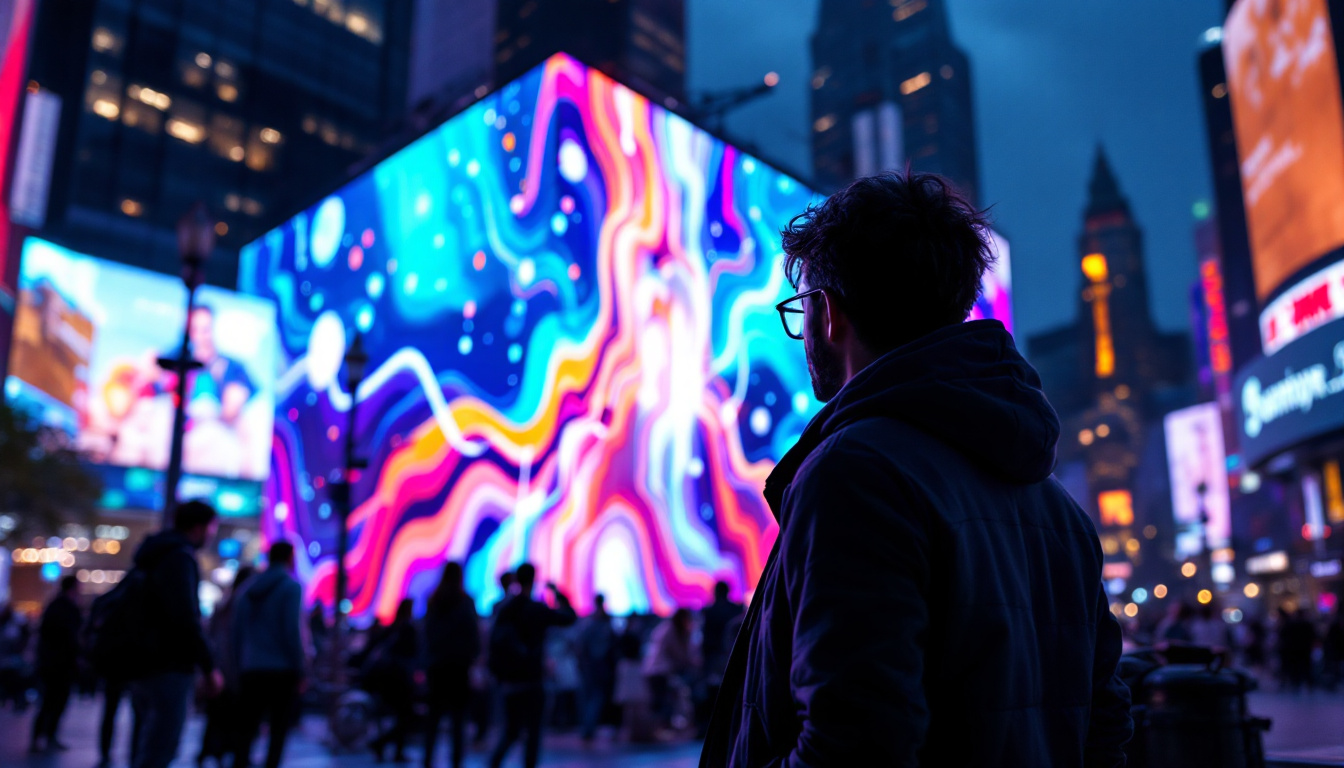In recent years, LED displays have become a cornerstone of modern visual technology, transforming the way information is presented in various settings. From large outdoor billboards to indoor screens in shopping malls and conference rooms, LED technology has revolutionized visual communication. This article delves into the intricacies of LED displays, exploring their components, benefits, applications, and future trends.
Understanding LED Technology
LED, or Light Emitting Diode, is a semiconductor device that emits light when an electric current passes through it. This technology has evolved significantly since its inception, leading to the development of vibrant and efficient displays that are widely used today. The journey of LED technology began in the early 1960s, when the first visible light-emitting diodes were created, primarily in red. Over the decades, advancements in materials and manufacturing processes have enabled the production of LEDs in a full spectrum of colors, including blue and green, which are essential for creating white light through various combinations.
How LED Displays Work
At the core of an LED display are tiny diodes that emit light in various colors. These diodes are arranged in a grid, forming pixels that combine to create images and videos. The intensity and color of the light emitted by each diode can be controlled individually, allowing for a wide range of colors and brightness levels. This capability is particularly advantageous in dynamic environments, where displays need to adapt to different lighting conditions and content requirements. Furthermore, the energy efficiency of LEDs means that they consume significantly less power compared to traditional incandescent or fluorescent lighting, making them an environmentally friendly choice.
LED displays can be categorized into two main types: direct view and backlit. Direct view displays consist of an array of LEDs that create the image directly, while backlit displays use LEDs to illuminate a liquid crystal display (LCD) panel from behind. Each type has its unique advantages and applications, catering to different needs in the marketplace. For instance, direct view displays are often employed in large outdoor billboards due to their brightness and visibility from long distances, while backlit displays are commonly found in televisions and computer monitors, offering excellent color accuracy and contrast.
Types of LED Displays
LED displays can be classified into several types based on their application and technology. The most common types include:
- Outdoor LED Displays: Designed to withstand harsh weather conditions, these displays are often used for advertising and public information in high-traffic areas. They are built with durable materials and protective coatings to ensure longevity, even in extreme temperatures and exposure to moisture.
- Indoor LED Displays: These are typically used in venues such as shopping malls, airports, and conference centers, offering high resolution and brightness for close viewing. Their versatility allows for seamless integration into various architectural designs, enhancing the aesthetic appeal of the space.
- Transparent LED Displays: A newer technology that allows for visibility through the display, making them ideal for retail environments where product visibility is essential. This innovation not only maximizes advertising space but also creates an immersive shopping experience, as customers can view products behind the display while still engaging with dynamic content.
Additionally, there are specialized LED displays such as flexible LED screens, which can be bent and shaped to fit unconventional spaces, and high-definition LED displays that offer superior resolution for applications requiring intricate detail, such as digital signage in museums or galleries. As technology continues to advance, the potential applications for LED displays are expanding, paving the way for even more innovative uses in various industries.
The Advantages of LED Displays
LED displays offer numerous benefits that make them a preferred choice for various applications. Their advantages extend beyond just visual appeal, encompassing efficiency, durability, and versatility.
Energy Efficiency
One of the standout features of LED technology is its energy efficiency. Compared to traditional display technologies such as LCD and plasma, LED displays consume significantly less power. This not only reduces operational costs but also contributes to a lower carbon footprint, making them an environmentally friendly option. Furthermore, the reduced energy consumption translates to less heat generation, which can enhance the overall performance and lifespan of the display. In settings where multiple screens are used, such as in retail or advertising, the cumulative energy savings can be substantial, making LED displays a financially savvy investment.
Longevity and Durability
LED displays are known for their longevity. With a lifespan that can exceed 100,000 hours, they outperform many other display technologies. Additionally, they are more resistant to shock and vibration, making them suitable for a variety of environments, including outdoor settings where exposure to the elements is a concern. This durability means that maintenance and replacement costs are significantly lower over time. In sectors like transportation and public safety, where reliability is paramount, LED displays have proven to be a dependable choice, ensuring that critical information is conveyed without interruption.
High Brightness and Contrast
LED displays provide exceptional brightness levels, making them visible even in direct sunlight. This high brightness, combined with excellent contrast ratios, ensures that images and videos are clear and vibrant, enhancing the overall viewing experience. This quality is particularly important for outdoor advertising and events. Moreover, the ability to adjust brightness levels dynamically allows for optimal viewing in varying light conditions, ensuring that the display remains effective at all times. The advanced color accuracy of LED technology also means that brands can present their visuals with striking fidelity, capturing the attention of passersby and creating a memorable impression.
Versatility in Application
Another significant advantage of LED displays is their versatility in application. From large-scale billboards to small indoor screens, LED technology can be adapted to fit a wide range of formats and sizes. This flexibility allows businesses and organizations to customize their display solutions to meet specific needs, whether for advertising, information dissemination, or entertainment. Additionally, LED displays can be easily integrated with various technologies, such as interactive touch screens and mobile connectivity, further enhancing their functionality. As a result, they are increasingly being used in diverse settings, including sports arenas, concert venues, retail spaces, and corporate environments, showcasing their ability to cater to different audiences and purposes.
Applications of LED Displays
The versatility of LED displays allows them to be utilized across a wide range of industries and applications. Their adaptability makes them suitable for both commercial and personal use.
Advertising and Marketing
One of the most prominent applications of LED displays is in advertising. Billboards and digital signage in retail environments leverage LED technology to capture attention and convey messages effectively. The ability to change content quickly and remotely allows advertisers to keep their messages fresh and relevant, maximizing engagement with potential customers.
Events and Entertainment
In the entertainment industry, LED displays are ubiquitous. Concerts, festivals, and sporting events utilize large LED screens to enhance the audience’s experience. These displays can show live feeds, graphics, and animations, creating an immersive atmosphere that captivates viewers.
Corporate and Educational Settings
LED displays are increasingly being adopted in corporate and educational environments. In conference rooms, they serve as presentation tools, displaying slides, videos, and virtual meetings. In educational institutions, they enhance learning experiences by providing dynamic visual content that aids in comprehension and retention.
Challenges and Considerations
While LED displays offer numerous advantages, there are also challenges and considerations that potential users should be aware of before making an investment.
Initial Costs
The initial investment for LED displays can be significant, especially for high-resolution models. Although the long-term savings on energy and maintenance costs can offset this initial expense, organizations must weigh their budget against their needs and potential return on investment.
Installation and Maintenance
Proper installation of LED displays is crucial for optimal performance. This may require specialized skills, especially for large outdoor installations. Additionally, while LED displays are generally low-maintenance, they may require occasional servicing to ensure peak performance and address any issues that arise over time.
Content Management
Managing the content displayed on LED screens can be a complex task. Organizations must have a strategy in place for creating, scheduling, and updating content regularly. This often involves using content management systems that can handle multiple displays and formats, adding another layer of complexity to the deployment of LED technology.
The Future of LED Displays
The future of LED displays looks promising, with ongoing advancements in technology and applications. As the demand for high-quality visual communication continues to grow, several trends are emerging that will shape the industry.
Advancements in Technology
Technological advancements are driving the evolution of LED displays. Innovations such as microLED and OLED technologies are paving the way for even higher resolutions, better color accuracy, and thinner designs. These advancements will enable more creative applications, such as flexible displays and integrated lighting solutions.
Integration with Smart Technology
The integration of LED displays with smart technology is another trend gaining traction. Smart LED displays can connect to the internet, allowing for real-time content updates, remote monitoring, and data analytics. This connectivity enhances the functionality of displays, making them more interactive and responsive to user needs.
Sustainability Initiatives
As sustainability becomes a priority for many organizations, the LED display industry is also focusing on eco-friendly practices. This includes using recyclable materials, reducing energy consumption, and implementing responsible manufacturing processes. These initiatives not only appeal to environmentally conscious consumers but also align with global efforts to combat climate change.
Conclusion
LED displays have transformed the landscape of visual communication, offering unparalleled advantages in energy efficiency, durability, and versatility. Their applications span various industries, from advertising to education, making them an essential tool in today’s digital age. While challenges such as initial costs and content management exist, the benefits far outweigh these considerations.
As technology continues to advance and sustainability becomes a focal point, the future of LED displays appears bright. Organizations that embrace this technology stand to gain a competitive edge, enhancing their communication strategies and engaging their audiences more effectively than ever before.
Discover LumenMatrix LED Display Solutions
Ready to elevate your visual communication strategy with the latest in LED technology? Look no further than LumenMatrix, a pioneer in crafting LED display modules that not only enhance brand visibility but also provide immersive visual experiences. Whether you need an Indoor LED Wall Display for your corporate headquarters, an Outdoor LED Wall Display for impactful advertising, or any of our specialized solutions like Vehicle LED Displays, LED Sports Displays, or Custom LED Displays, LumenMatrix has you covered. Embrace the future of digital signage with our innovative and versatile LED solutions. Check out LumenMatrix LED Display Solutions today and transform the way you engage with your audience.

